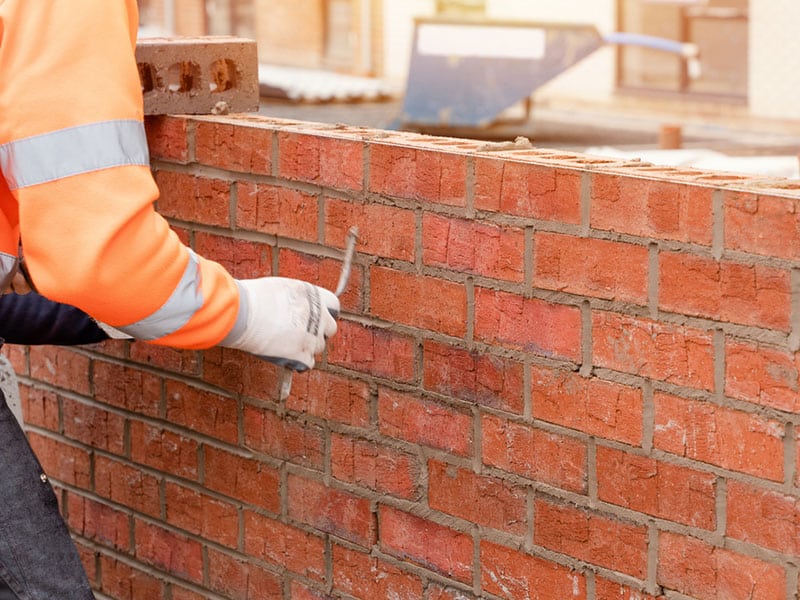Image Source: Google
Historic buildings are not only architectural marvels but also repositories of our shared heritage. Preserving these structures requires specialized knowledge and techniques, including tuckpointing. Tuckpointing is a meticulous process that involves repairing and restoring the mortar joints in brickwork. In this article, we will delve into the secrets behind tuckpointing services for historic buildings, uncovering the importance of this technique and the steps involved in preserving these valuable structures.
The Importance of Tuckpointing for Historic Buildings
Historic buildings are often adorned with intricate brickwork that has stood the test of time. However, the mortar joints that hold these bricks together can deteriorate over the years due to weathering, moisture, and other environmental factors. Tuckpointing plays a crucial role in maintaining the structural integrity and aesthetic appeal of historic buildings. Here are some reasons why tuckpointing is essential for these structures:
1. Preserving the Original Character
- Tuckpointing helps retain the original look and feel of historic buildings by ensuring that the mortar matches the color and texture of the surrounding bricks. Refer Link: https://www.keystonepointing.com.au/tuckpointing-sydney.
- It allows for the seamless repair of damaged mortar joints without compromising the overall appearance of the structure.
2. Preventing Further Damage
- Cracked or deteriorating mortar joints can lead to water infiltration, which can cause extensive damage to the underlying brickwork.
- Tuckpointing helps seal the joints and prevent water from seeping into the walls, thereby protecting the building from future deterioration.
The Tuckpointing Process
Tuckpointing is a meticulous and labor-intensive process that requires skill and expertise. Here is an overview of the steps involved in tuckpointing historic buildings:
1. Assessment and Preparation
- Inspect the mortar joints to determine the extent of the damage and the type of mortar used in the original construction.
- Prepare the work area by removing any loose mortar, dirt, or debris from the joints using specialized tools.
2. Mixing the Mortar
- Create a mortar mix that matches the color and composition of the original mortar to ensure a seamless repair.
- Adjust the mix to achieve the desired consistency for tuckpointing, which requires a fine line between workability and strength.
3. Tuckpointing Technique
- Apply the mortar to the joints using a pointing trowel, filling the voids and creating a smooth and even finish.
- Use a straight edge to remove excess mortar and create crisp lines that mimic the appearance of traditional tuckpointing.
4. Finishing Touches
- Allow the mortar to set for the recommended time before smoothing and shaping the joints to match the surrounding brickwork.
- Brush off any remaining mortar residue and clean the brick surface to reveal the restored beauty of the building.
Choosing the Right Tuckpointing Services
When it comes to tuckpointing historic buildings, it is essential to select a reputable and experienced contractor who understands the unique requirements of these structures. Here are some factors to consider when choosing tuckpointing services:
1. Expertise and Experience
- Look for contractors with a proven track record of working on historic buildings and expertise in tuckpointing techniques.
- Ask for references and examples of past projects to assess the quality of their workmanship.
2. Knowledge of Historic Preservation
- Ensure that the contractor is familiar with the guidelines and regulations governing historic preservation to avoid any violations or damage to the building.
- Verify that the materials and techniques used are in line with best practices for preserving historic structures.
3. Customized Solutions
- Choose a contractor who can tailor their tuckpointing services to meet the specific needs and requirements of your historic building.
- Discuss your expectations and goals for the project to ensure a personalized approach that prioritizes the preservation of the building's unique features.
By understanding the importance of tuckpointing for historic buildings and following the right steps in the tuckpointing process, you can ensure the long-term preservation of these valuable structures. With the help of knowledgeable and skilled tuckpointing services, your historic building can continue to stand as a testament to the craftsmanship and artistry of bygone eras.
